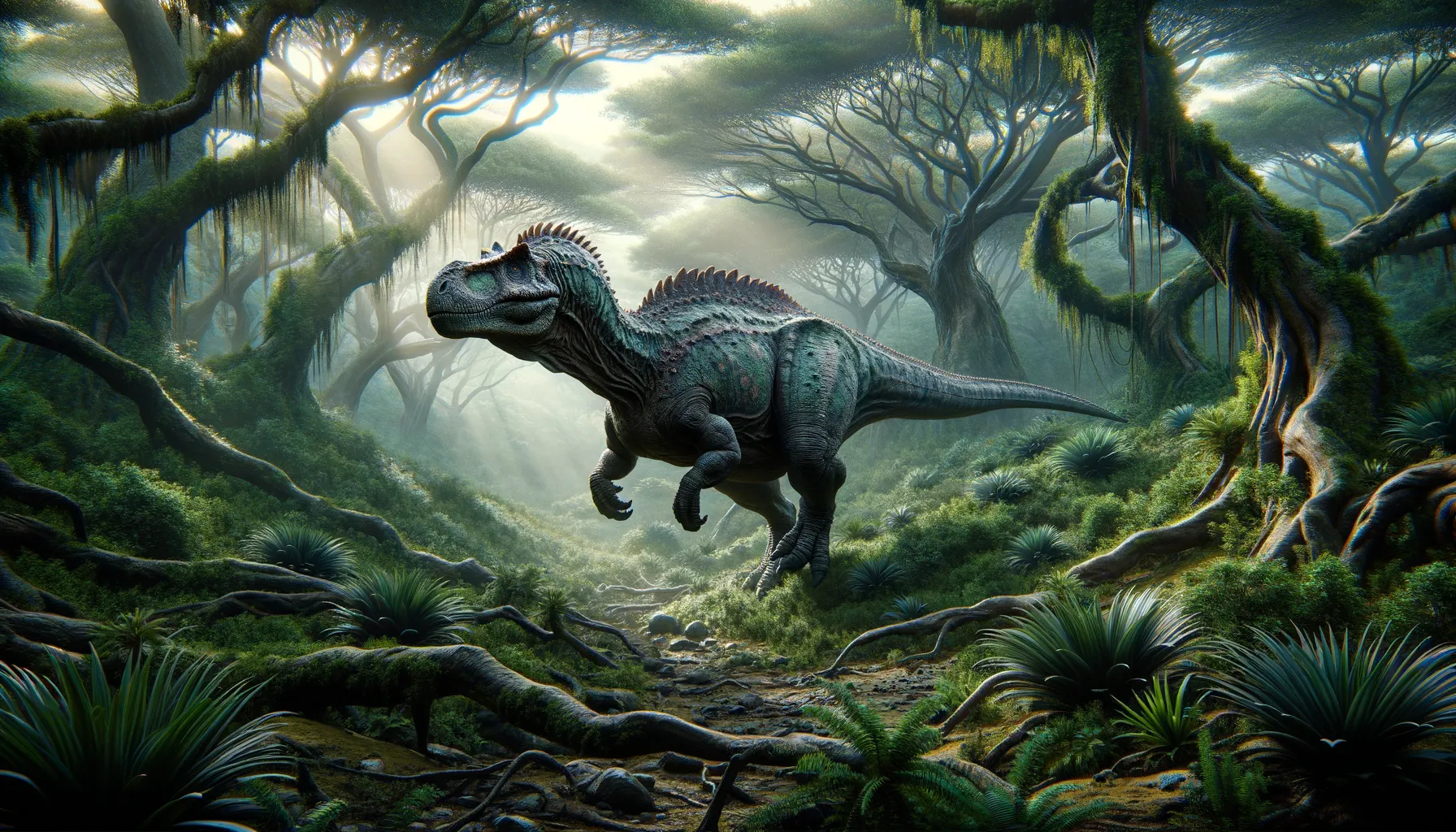
Saichania
The armored guardian of the Cretaceous plains.
Period
Cretaceous
Length
Measured up to 7 meters in length.
Height
Around 2 meters tall.
Weight
Approximately 2 tonnes.
Saichania was a heavily armored, plant-eating dinosaur known for its durability and defense mechanisms. Living during the late Cretaceous period, this ankylosaurid moved slowly, using its club-like tail as protection against predators. Its squat, muscular build allowed it to thrive amidst the rough terrain and thick vegetation of its time, making it one of the best-defended dinosaurs of its era.
Diet
Saichania was herbivorous, primarily feeding on tough, low-lying plants and vegetation. Its flat, broad teeth were well-suited for grinding dense plant material.
Hunting
As a herbivore, Saichania did not hunt other animals. It relied on its armored body and tail club to fend off carnivorous predators rather than engaging in active hunting.
Environmental challenges
Saichania faced harsh environmental conditions in the arid Gobi Desert, with limited water and vegetation. Adaptations such as a robust body and a well-equipped digestive system helped it survive these challenges. Its heat tolerance and ability to consume fibrous plants allowed it to thrive where other species might struggle.
Speed
Slow-moving due to its heavily-armored body.
Lifespan
Estimated lifespan of 70 to 80 years.
First discovery
First discovered in the Gobi Desert, Mongolia, in 1977.
Fun Facts
- Saichania was a heavily armored dinosaur, which means its name translates to 'beautiful one' in Mongolian.
- This dinosaur lived during the Late Cretaceous period, roughly 70 to 66 million years ago.
- Saichania had bony plates and spikes covering its back, offering it protection from predators.
- It was a herbivore, feeding mainly on low-growing plants like ferns and cycads.
- Saichania is believed to have had a specialized tongue and gut to help digest tough plant material.
- The first fossil of Saichania was discovered in the Gobi Desert of Mongolia in 1977.
- Despite its armor, Saichania could have been surprisingly fast for its size, aiding in its escape from predators.
Growth and Development
Saichania experienced gradual growth over many years, reaching maturity slowly compared to other dinosaurs. This slow growth ensured its protective armor developed effectively, providing it with a strong defense against predators. Juveniles likely stayed close to adults for protection as they navigated the dangerous environment.
Habitat
Saichania thrived in arid, desert-like environments, surrounded by sparse, tough vegetation. It was common in the Gobi Desert area, where water sources were scarce and temperatures often extreme. These adaptations to its habitat made it a resilient survivor in such challenging conditions.
Interaction with other species
Saichania likely had little direct interaction with carnivorous species, relying on its armor for protection. It coexisted with other herbivorous dinosaurs, sharing resources such as food and water. Despite its defensive adaptations, cooperative behaviors or group living scenarios have not been extensively documented in its fossil record.
Natural lifespan
Saichania likely had a long lifespan, perhaps up to 80 years, due to its effective defense mechanisms.
Reproduction
Saichania likely reproduced by laying clutches of eggs in nests. Like most dinosaurs, it is believed to have engaged in simple reproductive rituals, although detailed behaviors remain unclear. Parental care post-hatching is uncertain but potentially limited.
Social behaviour
There is limited evidence suggesting Saichania had complex social structures; it may have been more solitary or lived in loose aggregations. The primary focus was likely on defense rather than social interaction, given its violent threats from predators.
Fossil locations
Fossils of Saichania have been predominantly found in the Gobi Desert, particularly in Mongolia. These sites have provided crucial insights into its anatomy and environment. The remarkably preserved fossils helped paleontologists reconstruct its lifestyle and ecological niche during the Late Cretaceous.
